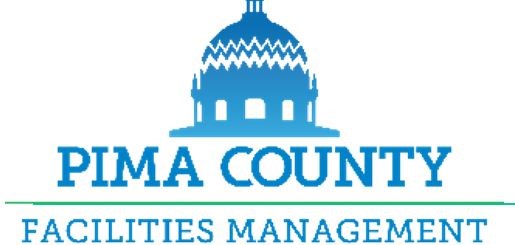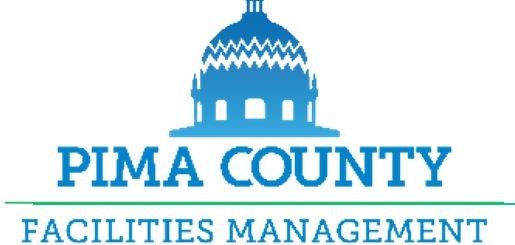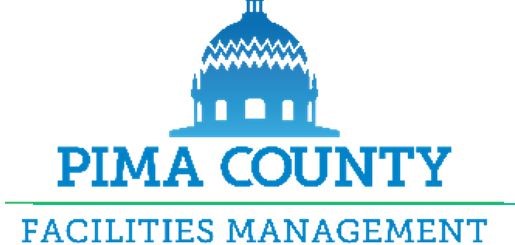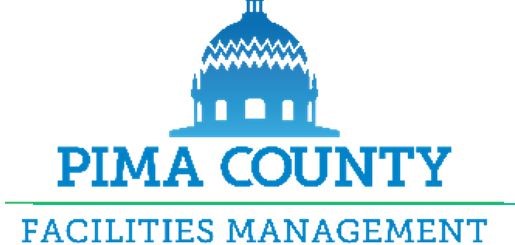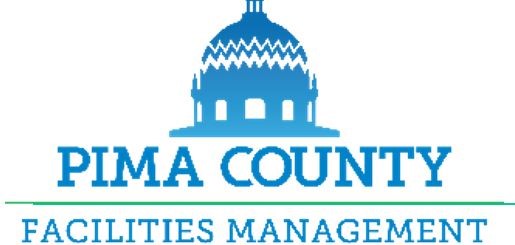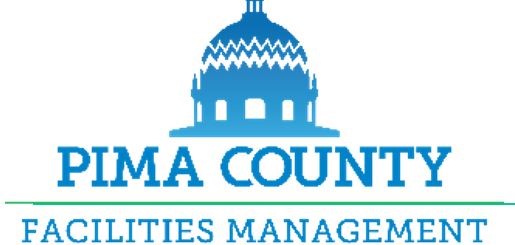Title Page
-
Site conducted
-
Conducted on:
-
Audit Type:
-
***NO RESPONSE NECESSARY*** OR ***PLEASE RESPOND TO FACILITIES MANAGEMENT - SAFETY AND HEALTH LOSS CONTROL OFFICER BY***
-
Location:
-
Prepared by:
-
Department Site Personnel
1.0 Employee OSHA (publication 3165) and U.S. Department of Labor Postings: 29 CFR 1903.2 and Pima County Medical Clinics
-
Are the OSHA (publication 3165) and US Department of Labor Postings posted and available for the employees to read?
-
Is the Pima County Workers Compensation Contacts and Medical Clinics information posted?
30.0 ELECTRICAL
-
30.1 EXTENSION CORDS/ELECTRICAL STRIPS - MANUFACTURER'S GUIDELINES (29 CFR 1910.303(b)(2)); Are extension cords and electrical strips used in accordance with manufacturer's guidelines?
-
30.2 EXTENSION CORDS/ELECTRICAL STRIPS - DAISY CHAINING (29 CFR 1910.303(b)(2)); Are electrical cords and electrical power strips free from daisy chaining?
-
30.3 EXTENSION CORDS NOT USED AS PERMANENT WIRING (29 CFR 1910.305(g)(1)(iv)(A)); Are extension cords used only for immediate use and not as permanent wiring?
-
30.4 ELECTRICAL CORD DAMAGE AND DEFECTS (29 CFR 1910.334(a)(2)(ii)); Are all portable cord and plug connected equipment and extension cords free from damage and defects such as damage to the outer jackets (insulation) or missing grounding pins?
-
30.5 ELECTRICAL CORD STRAIN RELIEF POINTS (29 CFR 1910.305(g)(2)(iii)); Are all strain relief points free from exposed electrical wires?
-
30.6 ELECTRICAL CONDUCTORS (29 CFR 1910.303(c)(3)(i)); Are all splices and joints and the free ends of conductors covered with an insulation equivalent to that of the conductors or with an insulating device identified for the purpose?
-
30.7 UNUSED OPENINGS IN ELECTRICAL OUTLETS, BOXES, CABINETS (29 CFR 1910.303(b)(7)(i) and 29 CFR 1910.305(b)(1)(ii)); Are unused openings in electrical outlets, boxes, equipment casings, cabinets closed to prevent exposure and accidental entry?
-
30.8 STORAGE 36 INCHES FROM ELECTRICAL PANELS (29 CFR 1910.303(g)(1)(i)(A)); Is storage maintained 36 inches from electrical panels?
-
30.9 COVERS ON ELECTRICAL BOXES, JUNCTION BOXES AND OUTLET FIXTURES (29 CFR 1910.305(b)(2)(i)); Do electrical boxes, junction boxes, and fittings have covers?
-
30.10 GFCI PROTECTION OUTDOORS FOR CORD AND PLUG CONNECTED EQUIPMENT (29 CFR 1910.304(B)(3)(ii)(A)); Is GFCI protection provided when an employee is outdoors and operating or using cord and plug connected equipment supplied by 125-volt, 15, 20 or 30 amp circuits?
-
30.13 WATERPROOF RECEPTACLES FOR OUTDOOR AND DAMP LOCATIONS (29 CFR 1910.305(j)(2)(v)); Are waterproof receptacles installed (with weather - tight gaskets in place) in outdoor locations or in other damp locations?
-
30.14 SWITCHES, CIRCUIT BREAKERS AND SWITCHBOARDS (29 CFR 1910.305(e)(2)); Are switches, circuit breakers, and switchboards that are installed in wet locations enclosed in weatherproof enclosures?
-
30.15 ELECTRICAL PANELS LABELED WITH VOLTAGE, CURRENT AND PROTECTIVE CLOTHING REQUIREMENTS (29 CFR 1910.303(e)(1)(ii); NFPA 70E 130.5(H)); Are labels providing voltage, current and protective clothing requirements posted and legible, on the outside of electrical panels?
-
30.16 DURABILITY OF LABELS ON ELECTRICAL PANELS 29 CFR 1910.303(e)(2) Is/are the label(s) on the electrical panel made of a material of sufficient durability to withstand the environment involved?
-
30.17 LAMP FIXTURES OR GUARDS (29 CFR 1910.305(a)(2)(ix)); Are all lamps used for general illumination protected from accidental contact or breakage by a suitable fixture or guard?
-
30.18 EXPOSED LIVE PARTS OF FIXTURES, LAMPS, LAMP HOLDERS ROSETTES AND RECEPTACLES (29 CFR 1910.305(j)(1)(i)); Do all fixtures, lamp holders, lamps, rosettes, and receptacles have no live parts exposed to employee contact? (Rosettes and cleat-type lamp holders and receptacles located at least 8 feet above the floor may have exposed parts). Note: receptacle covers are designed to prevent people from coming into contact with (that is, touching) properly installed live electrical parts that are inside the receptacle box
-
30.19 LOTO PERFORMANCE REQUIREMENTS (29 CFR 1910.147(a)(1)(i)); Does the location follow minimum LOTO performance requirements for the control of hazardous energy such as the unexpected energization or startup of the machines or equipment, or the release of stored energy?
-
30.20 OTHER "OBSERVED" ELECTRICAL CONDITIONS
40.0 EMERGENCY EXITS
-
40.1 EXIT ROUTES FREE AND UNOBSTRUCTED (29 CFR 1910.37(a)(3)); Are exit routes free and unobstructed?
-
40.2 EXITS CLEARLY VISIBLE AND MARKED "EXIT" (29 CFR 1910.37(b)(2)); Are exits clearly visible and marked by a sign reading "Exit"?
-
40.3 "EXIT" SIGNS ILLUMINATED (29 CFR 1910.37(b)(6)); Are all "Exit" signs illuminated by a reliable light source distinctive in color, self-luminous or electroluminescent design?
-
40.4 DOORWAY "NOT AN EXIT" (29 CFR 1910.37(b)(5)); Are doorways that could be mistaken for an exit marked "Not an Exit"?
-
40.5 EMERGENCY LIGHTING TEST (NFPA 101 7.9.3.1.1); Do all emergency lights operate for a minimum of 30 seconds when the test button is pressed?
-
40.6 OTHER "OBSERVED" EMERGENCY EXIT CONDITIONS
50.0 EYE WASH STATIONS
-
50.1 ACCESS TO EYEWASH STATIONS - SHOWERS (29 CFR 1910.151(c)); Are eye wash stations - showers [where the eyes or body of any person may be exposed to injurious corrosive materials] unblocked and placed within 10 seconds or 55 feet of the hazard?
-
50.2 EYE WASH STATION - SHOWERS TESTING (ANSI Z358.1 2014); Are eye wash stations - showers flow tested on a weekly basis and mechanically tested annually?
-
50.3 EYE WASH STATION - TEPID WATER (ANSI Z358.1 2014); Does the eye wash station deliver tepid (between 60 and 100 degrees F) water for 15 minutes?
-
50.4 PORTABLE EYE WASH STATION SOLUTION EXPIRATION DATE (ANSI Z358.1 2014); Are the eyewash solutions for portable eye wash stations being inspected for expiration dates?
-
50.5 OTHER "OBSERVED" EYE WASH CONDITIONS
70.0 FIRE EXTINGUISHERS
-
70.1 FIRE EXTINGUISHER MOUNTING - LOCATION - IDENTIFICATION (29 CFR 1910.157(c)(1)); Are portable fire extinguishers properly mounted, located and identified so they are readily accessible to employees?
-
70.2 FIRE EXTINGUISHER MONTHLY INSPECTIONS (29 CFR 1910.157(e)(2));
-
70.3 FIRE EXTINGUISHER ANNUAL INSPECTIONS (29 CFR 1910.157(e)(3)); Do fire extinguishers receive an annual inspection?
-
70.4 OTHER "OBSERVED" FIRE EXTINGUISHER CONDITIONS
80.0 FIRE SAFETY
-
80.1 COMBUSTIBLE MATERIAL STORAGE AROUND HEATERS OR HEATING DEVICES (International Fire Code 2012:315.3); Are combustible materials in buildings separated from heaters or heating devices by distance or shielding so ignition cannot occur?
-
80.2 STORAGE CLEARANCE OF 24 INCHES FOR NON-SPRINKLED BUILDING (International Fire Code 2012:315.3.1); Is storage maintained 24 inches below the ceiling in non-sprinkled buildings?
-
80.3 STORAGE CLEARANCE OF 18 INCHES FOR SPRINKLED BUILDING (29 CFR 1910.159(c)(10); International Fire Code 2012:315.3.1); Is storage maintained 18" from sprinkler heads in buildings which have fire sprinkler systems?
-
80.4 EXITS AND EXIT ENCLOSURES FREE FROM COMBUSTIBLE MATERIALS (International Fire Code 2012 315.3.2); Are exits and exit enclosures kept free from storage of combustible materials?
-
80.5 BOILER, MECHANICAL AND ELECTRICAL ROOMS FREE FROM COMBUSTIBLE MATERIALS (International Fire Code 2012;315.3.3); Are boiler rooms, mechanical rooms or electrical equipment rooms kept free from the storage of combustible materials? Combustible materials shall not be stored in these areas
-
80.6 FLAMMABLES AND COMBUSTIBLES STORED IN FLAMMABLE CABINETS (29 CFR 1910.106(e)(2)(ii)(b)); Are flammables and combustibles properly stored in flammable cabinets?
-
80.7 SPRING CLOSING LID AND SPOUT ON FLAMMABLE CONTAINERS (UP TO 5 GAL) (29 CFR 1910.106(a)(29)); Are flammable containers approved containers, of not more than 5 gallons capacity, having a spring-closing lid and spout cover and so designed that it will safely relieve internal pressure when subjected to fire exposure?
-
80.8 OTHER "OBSERVED" FIRE SAFETY CONDITIONS
90.0 FIRST AID KITS
-
90.1 FIRST AID KIT AVAILABILITY (OSHA 29 CFR 1910.151(b)); If emergency medical services are not in near proximity, are first aid kits available?
-
90.2 FIRST AID KIT SUPPLIES (OSHA 29 CFR 1910.151 (App A)); Are the First Aid Kits fully supplied with unexpired components?
100.0 FORKLIFTS/POWERED INDUSTRIAL TRUCKS
-
-
100.1 EMPLOYER TRAINING OF POWERED INDUSTRIAL TRUCK OPERATORS (29 CFR 1910.178(l)(1)(i)); Has the employer ensured that each powered industrial truck operator is properly trained and competent to operate a powered industrial truck safety?
-
100.2 PRE-TRIP INSPECTIONS (29 CFR 1910.178(q)(7)); Does the employer ensure that the operators perform daily pre-trip inspections prior to using the powered industrial trucks?
-
100.3 UNSAFE PIT REMOVED - REPAIRED (29 CFR 1910.178(q)(1) Are any powered industrial trucks, which are not in safe operating condition, removed from service until proper repairs can be made?
-
100.4 OBSERVATIONS - SAFE OPERATION OF P.I.T. (29 CFR1910.178(m) and (29 CFR 1910.178(n), 29 CFR 1910.178(o) Are observed powered industrial truck (P.I.T.), at the time of the audit, seen to be operating the equipment in a safe manner?
-
100.5 PIT MODIFICATION OR ALTERATION (29 CFR 1910.178(q)(6) If the PIT is modified or altered, was it done in accordance with the manufacturer's approval?
-
100.6 APPROVED TESTING LABORATORY LABEL (29 CFR 1910.178(a)(3) Is the Approved Testing Laboratory label present?
-
100.7 MANUFACTURER'S NAMEPLATES AND MARKINGS (29 CFR1910.178(a)(6) Are the manufacturer's nameplates and markings in place and maintained in a legible condition?
-
100.8 UNSAFE PIT REMOVED - REPAIRED (29 CFR 1910.178(q)(1)); Are any powered industrial trucks which are not in safe operating condition removed from service until proper repairs can be made?
-
100.9 OBSERVATIONS - SAFE OPERATION OF PIT (29 CFR 1910.178(m)(n)(o)); Are observed powered industrial truck operators (at the time of the audit) seen to be operating the equipment in a safe manner?
-
100.10 OTHER "OBSERVED" POWERED INDUSTRIAL TRUCK SAFETY OBSERVATIONS
120.0 HAND AND PORTABLE POWERED TOOLS AND OTHER HAND HELD EQUIPMENT
-
120.1 HAND & PORTABLE HAND TOOL SAFE CONDITION (29 CFR 1910.242(a)); Are hand and portable power tools kept in a safe/serviceable condition?
-
120.2 VERTICLE PORTABLE GRINDER SAFETY GUARDS (29 CFR 1910.243(c)(3)); Do vertical portable grinders (right angle grinders) have the manufacture's safety guards properly installed?
-
120.3 HAND AND POWER TOOL SAFE STORAGE (Best Management Practice); Are hand tools and power tools stored safely to prevent potential injury to employees?
-
120.4 COMPRESSED AIR USED FOR CLEANING (29 CFR 1910.242(b)); Are employees using compressed air for cleaning, only when reduced to less than 30 p.s.i. and then only with effective chip guarding and personal protective equipment?
-
120.5 OTHER" OBSERVED" HAND AND PORTABLE POWER TOOL SAFETY CONDITIONS
130.0 HAZARD COMMUNICATION
-
130.1 LIST OF HAZARDOUS CHEMICALS AND SDS SHEETS (29 CFR 1910.1200(e)(1)(i); Is there a list of hazardous chemicals known to be present and are the appropriate safety data sheets available to employees?
-
130.2 PROPER CHEMICAL CONTAINER LABELING (29 CFR 1910.1200(f)(6)); Are chemical containers labeled properly?
-
130.3 OTHER "OBSERVED" HAZARD COMMUNICATION CONDITIONS
150.0 LADDER SAFETY
-
150.1 ALL MANUFACTURER/WARNING LABELS LEGIBLE (BEST MANAGEMENT PRACTICE); Are manufacturer warning / information labels (weight capacity, Category, etc.) legible?
-
150.2 LADDER INSPECTIONS (29 CFR 1910.23(b)(9)); Are ladders inspected before initial use in each work shift, and more frequently as necessary, to identify any visible defects that could cause employee injury?
-
150.3 DEFECTIVE LADDERS (29 CFR 1910.23(b)(10)); Is any ladder with structural or other defects immediately tagged "Dangerous: Do Not Use" or with similar language and removed from service until repaired or replaced?
-
150.4 LADDERS USED ONLY FOR THE PURPOSES FOR WHICH THEY WERE DESIGNED (29 CFR 1910.23(b)(8)); Are ladders being used only for the purposes for which they were designed?
-
150.5 LADDERS NOT LOADED BEYOND MAXIMUM INTENDED LOAD (29 CFR 1910.23(c)(3)); Are ladders not loaded beyond the maximum intended load? Includes total load of employee and all tools, equipment, and materials being carried
-
150.6 LADDERS STORED PROPERLY AND SECURED (BEST MANAGEMENT PRACTICE); Are the observed ladders which are not in use stored properly and secured?
-
150.7 OBSERVED FIXED LADDERS COMPLY WITH OSHA REGULATIONS (29 CFR 1910.23(d)(1))
-
-
150.8 OBSERVED MOBILE LADDERS COMPLY WITH OSHA REGULATIONS (29 CFR 1910.23(e)); Do "OBSERVED" mobile ladder stands and mobile ladder stand platforms comply with OSHA regulations?
-
150.9 OTHER "OBSERVED" LADDER CONDITIONS
160.0 MACHINERY AND MACHINE GUARDING
-
-
160.1 TOOLS - MACHINES - PROPER GUARDING AT POINT OF OPERATION (29 CFR 1910.212(a)(1)); Do tools and machines have the proper guarding to protect the operator from hazards at the point of operation?
-
160.2 GRINDER WORK REST SET AT 1/8 OF AN INCH (29 CFR 1910.215(a)(4)); Are GRINDER work rests adjusted closely to the wheel with a maximum opening of one eighth (1/8) of an inch?
-
160.3 GRINDER TONGUE GUARDS SET AT 1/4 OF AN INCH (29 CFR 1910.215(b)(9)); Are GRINDER tongue guards adjusted so as to never exceed one-fourth (1/4) of an inch between the wheel to the tongue guard?
-
160.4 MACHINES ANCHORED TO PREVENT WALKING OR MOVING (ANSI MH26.2-2017; ANSI MH.2-2017; 29 CFR 1910.176(b)); Are machines designed for a fixed location securely anchored to prevent walking or moving?
-
160.5 OTHER "OBSERVED" MACHINERY AND MACHINCE GUARDING CONDITIONS
165.0 MATERIAL HANDLING AND STORAGE
-
165.1 STORAGE ISLES AND PASSAGEWAYS KEPT CLEAR AND IN GOOD REPAIR (29 CFR 1910.176(a)); Where mechanical handling equipment is used, are all isles and passageways kept clear and in good repair with no obstruction that could create a hazard?
-
165.2 MATERIAL SECURELY STORED (29 CFR 1910.176(b)); Is all storage material (i.e. Bags, containers, bundles, etc.), stored in tiers shall be stacked, blocked, interlocked and limited in height so that they are stable and secure against sliding or collapse?
-
165.3 MANUFACTURER'S RACK WEIGHT/CAPACITY POSTING (ANSI MH16.1-2012: ANI MH26.c-2007); Do storage racks have the manufacture's rack weight limit/capacity clearly posted?
-
165.4 OTHER "OBSERVED" MATERIAL HANDLING AND STORAGE CONDITIONS
200.0 PPE
-
200.1 REQUIRED PPE PROVIDED AND WORN (29 CFR 1910.132(a)); Is required PPE provided to the employees and do the employees wear the required PPE?
-
200.2 PPE MAINTAINED AND STORED PROPERLY (29 CFR 1910.132(a)); Is the PPE maintained and stored in a sanitary and reliable condition to prevent damage and/or contamination?
-
200.3 OTHER "OBSERVED" PPE CONDITIONS
210.0 WALKING WORKING SURFACES: GENERAL REQUIREMENTS - GUARDRAIL SYSTEMS- COVERS FOR HOLES - SIDEWALK SAFETY
-
210.1 GENERAL REQUIREMENTS PLACES OF EMPLOYMENT (29 CFR 1910.22(a)(1)); Are places of employment kept clean and orderly and in sanitary condition?
-
210.2 GENERAL REQUIREMENTS WORKROOM FLOORS (29 CFR 1910.22(a)(2)); Are the floors of every work room maintained in a clean and, so far as possible a dry condition?
-
210.3 GENERAL REQUIREMENTS ACCESS AND EGRESS (29 CFR 1910.22(c)); Does the employer provide, and ensure each employee uses a safe means of access and egress to and from walking-working surfaces?
-
210.4 HOUSEKEEPING STORAGE AREAS (29 CFR 1910.176(c)); Are storage areas kept free from accumulation of materials that constitute hazards from tripping, fire, explosion, or pest harborage? (Vegetation control will be exercised when necessary)
-
210.6 COVERS FOR HOLES (29 CFR 1910.29(e)); Do all covers for each hole on a walking-working surface (including skylights) meet the requirements in 1910.29(e)?
-
210.7 SIDEWALK SAFETY SIDEWALK ELEVATION CHANGE Are observed elevation changes on sidewalks 1/4" or less?
-
210.8 HOLES/OPENINGS FOR POINT OF ACCESS - SELF CLOSING GATE REQUIREMENTS (29 CFR 1910.29 (b)(13)(i)) Does the floor opening access point have a self-closing gate that slides or swings away from the hole, and is equipped with a top rail and a mid-rail or equivalent intermediate member that meets the requirements in paragraph (b) of this section? (NOTE: No longer may have chains guarding the opening).
-
210.9 STANDARD RAILING UNPROTECTED SIDE OR EDGE (29 CFR 1910.28(b)(1)(i) (A),(B),(C)); Are walking-working surfaces with and unprotected side or edge that is 4 feet or more above a lower level protected from falling by one or more of the following: Guard rail systems: Safety net systems or personal fall protection systems?
-
210.10 HAND RAILS AND STAIR RAILS SYSTEMS - Does the height of the stair rail systems meet the requirements of 29 CFR 1910.29(f)(1)(ii)?
-
210.11 HAND RAILS AND STAIR RAILS SYSTEMS (29 CFR 1910.29(f)(2)) - FINGER CLEARANCE - Is the minimum clearance between handrails and any other object 2.25 inches (5.7 cm)?
-
210.12 HAND RAILS AND STAIR RAILS SYSTEMS (29CFR 1910.29(f)(3)) - SURFACES - Are the handrails and stair rail systems smooth-surfaced to protect employees from injury, such as punctures or lacerations, and to prevent catching or snagging of clothing?
-
210.13 HAND RAILS AND STAIR RAILS SYSTEMS (29 CFR 1910.29(f)(4)) - OPENINGS IN STAIR RAILS - Does any opening in a stair rail system exceeds 19 inches (48 cm) at its least dimension?
-
210.14 HAND RAILS AND STAIR RAILS SYSTEMS (29 CFR 1910.29(f)(5)) - HANDHOLD - Do handrails have the shape and dimension necessary so that employees can grasp the handrail firmly?
-
210.15 HAND RAILS AND STAIR RAILS SYSTEMS (29 CFR 1910.29(f)(6)) - PROJECTION HAZARDS - The ends of handrails and stair rail systems do not present any projection hazards.
-
210.16 HAND RAILS AND STAIR RAILS SYSTEMS (29 CFR 1910.29(f)(7)) - STRENGTH CRITERIA - Are handrails and the top rails of stair rail systems capable of withstanding, without failure, a force of at least 200 pounds (890 N) applied in any downward or outward direction within 2 inches (5 cm) of any point along the top edge of the rail?<br><br>
-
210.17 OTHER - WALKING WORKING SURFACES: GENERAL REQUIREMENTS - GUARDRAIL SYSTEMS - COVERS FOR HOLES - SIDEWALK SAFETY
COMMENTS
-
COMMENTS
-
COMMENTS
SIGNATURES
-
Participating Employee from site audited:
-
Participating Facilities Management LCO:






